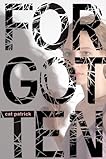 Like Mandarin by Kirsten Hubbard
Like Mandarin by Kirsten Hubbard
My rating: 5 of 5 stars
The winds in Washokey make people go crazy.
At fourteen, Grace Carpenter doesn’t quite fit in anywhere. Her pageant-obsessed mother has never quite forgiven her for an incident during the Little Miss Washokey Pageant seven years ago and is now utterly focused on grooming Grace’s little sister, Taffeta, to win that same competition. At the beginning of her first year of High School, the administration moved her up to Sophomore status, separating her from her friends every hour of the day except homeroom and lunch. She spends her free time roaming the badlands, picking up interesting rocks, dreaming of getting out of her tiny Wyoming town.
Grace knows of one other person who doesn’t quite fit in: beautiful 17-year-old Mandarin Ramey, who moved to town seven years ago and has maintained a distance from everyone ever since. Grace has admired her from afar since the first time she caught a glimpse of her. When the two girls are thrown together for a school project, Grace finally has the chance to get to know Mandarin, to try to be more like her. But the more she learns, the less sure she is that she wants to be like Mandarin, and the more she realizes she needs to be like herself instead.
Self-discovery is a familiar theme in young-adult novels, and Hubbard explores it in fluid prose. Grace’s colorful first-person narration is peppered with unexpected similes: the flower pinned to her hair in that last pageant flew “across the stage like a paper boat caught in an eddy of rainwater” (3); during a big storm “the river brimmed over its banks and jumbled up all the boulders like a kid spoiling a marbles game” (22). Her observations are often dryly funny, the sarcastic wit of a smart teenager aching to break out of her everyday life. Her girl-crush on Mandarin is realistically and sensitively drawn, and the betrayals that only those closest can commit strike hard. While in the beginning, Mandarin is the one who seems to live her impulses out loud, it becomes clear that under even the quietest exteriors, passions run deep. (I, like several other readers, found myself wondering if there was more than friendship to Grace’s relationship with Mandarin. Hubbard has a lovely answer to this question on her web site.)
It is a poignant tale, beautifully told. Fans of contemporary realistic fiction will find much to love here.
This is Hubbard’s debut novel. I read it for the Debut Author Challenge, and I’ll definitely be keeping an eye out for her next book, slated for publication in 2012.
Book Source: Checked out from my public library








